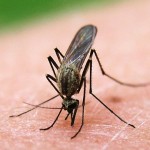 In a report in BioMed Central’s open access Virology Journal published last Friday, researchers showed a low cost method of detecting the mosquito-bourne dengue virus by using gold nanoparticles.
In a report in BioMed Central’s open access Virology Journal published last Friday, researchers showed a low cost method of detecting the mosquito-bourne dengue virus by using gold nanoparticles.
Half of the world’s population is at risk from being infected with dengue fever, with 50 to 100 million people being infected each year. There is no vaccine for dengue fever, making it one of the most dangerous viruses in the world.
Knowing which mosquitoes carry the dengue virus is vital to stopping its spread. With this in mind, researchers from the University of Notre Dame used DNAzyme linked to gold particles to find all types of the RNA genome needed for dengue.
“Full development of our novel DDZ-AuNP detection method will provide a practical, rapid, and low cost alternative for the detection of DENV in mosquito cells and tissues, and possibly infected patient serum, in a matter of minutes with little to no specialized training required,” Dr. James Carter, the lead author of the study, said.
Symptoms of dengue fever can include fever, headache, muscle and join pains and the signature skin rash, which closely resembles measles. There are some cases of dengue fever that escalate to become a potentially life threatening illness called dengue hemorrhagic fever. This results in bleeding and blood plasma leakage and potentially death.
Source: Vaccine News daily

















